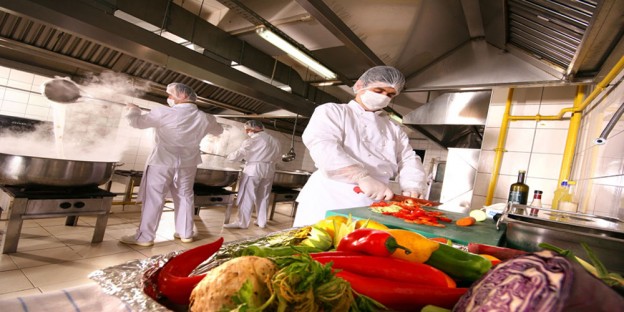When thousands of people live in close quarters for any length of time, the chance of infection increases. This amplifies when food and cleanliness are involved, so in cruise ship kitchens high hygiene and sanitation standards are of vital importance. The last thing cruise lines want is a guest who had a bad experience.
Many cruise companies follow the United States Public Health, or USPH, laws. The institution’s agency the Centre for Disease Control and Prevention (CDC) helps cruise ships in maintaining hygiene standards and curbing the spread of gastrointestinal illnesses.
Cruise lines typically have a weekly inspection but ramp things up when docked for port health inspections. Prior to arrival there are inspections as well, to ensure that everything is up to standard. If a ship fails an inspection, they could face consequences including bad publicity. Ships must score 86 or more on 100 to pass the test.
To maintain standards, cruise ship kitchens must ensure that food is handled and stored properly, dishes are cleaned and sanitised adequately, work stations are immaculate and personal hygiene is stringently adhered to.
There is a whole list of instructions that cruise ship kitchen employees must follow, particularly with regard to the storage and handling of cooked and raw foods, and dirty dishes. Those cooking and prepping food are not allowed to wear jewellery of any sort, not even a watch. Meat must be thawed in a separate room on different shelves and with proper labelling.
Cruise lines ensure that those involved in preparation, storage and service of food wear plastic gloves when necessary and always wash their hands after coming in contact with anything soiled. Repairs to all equipment are expected to be done immediately, and the kitchen is kept free of dust and grime. Garbage is thrown into appropriate containers with bags that are air tight.
The CDC often conducts surprise inspections and to pass these, staff in the food and beverage section clean everything with a special bleach solution and ensure everything is labelled and stored correctly. CDC inspectors even go so far as to check the temperature of warm food on the buffet lines, defrosting procedures and location of food in the defrosting rooms, and temperature of food items in the refrigerator.
Sometimes, however clean a ship may be, passengers could bring germs on board, one of the most contagious being the norovirus which causes viral gastroenteritis. It spreads quickly and easily, and with passengers and crew in such close quarters on a cruise ship, an outbreak becomes very real. To avoid this, cruise ship kitchen employees are expected wash their hands carefully, and often, with soap and water; thoroughly rinse fruit and vegetables and cook shellfish properly; clean and sanitise kitchen utensils, counters and surfaces often; and wash table linen, napkins and other laundry thoroughly.
Maintaining strict hygiene practices helps keep both employees and guests healthy and safe from diseases.


